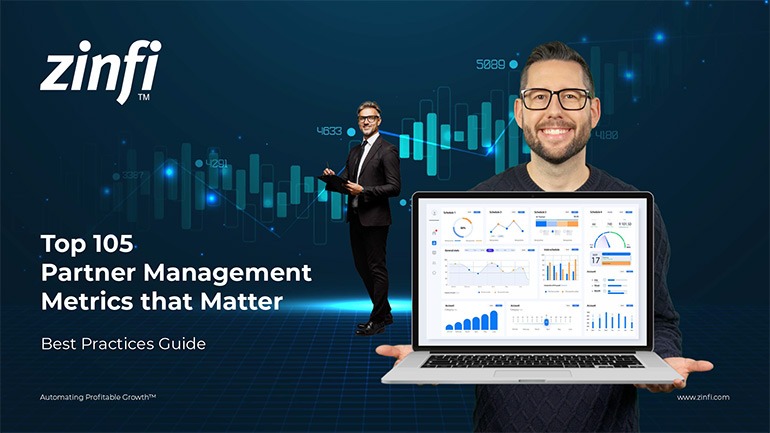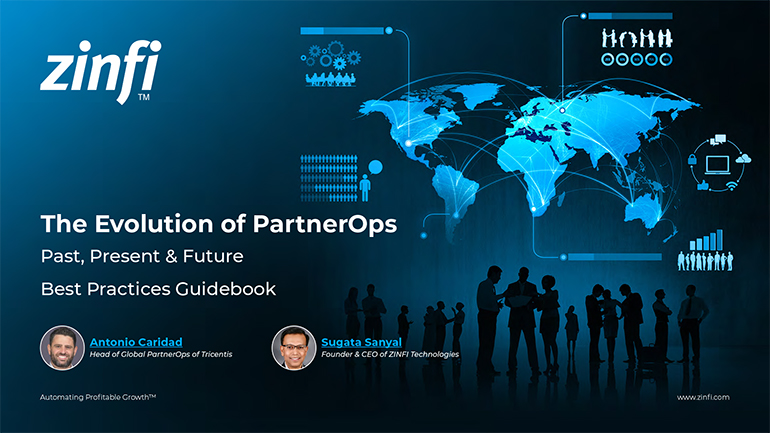Glossary - How to - Channel Sales Enablement
How to Implement Channel Sales Enablement?
Introduction
Understanding Channel Sales Enablement
Channel sales enablement refers to the strategies, tools, and resources that help channel partners sell products and services more effectively. It includes training programs, marketing support, sales assets, and technology solutions that enhance the performance of distributors, resellers, and other third-party vendors. A well-executed channel sales enablement program ensures that partners are well-equipped to understand, promote, and sell a vendor’s offerings.
In the modern partner ecosystem, channel sales enablement drives revenue growth, ensures consistent messaging, and improves partner engagement. Vendors that invest in robust enablement strategies empower their partners to be more independent and effective, ultimately leading to better sales outcomes.
The Role of Channel Sales Enablement in PRM
Partner Relationship Management (PRM) platforms incorporate channel sales enablement to streamline collaboration between vendors and partners. Automated PRM solutions provide centralized access to training modules, marketing content, and sales tools, reducing the complexity of partner management. With PRM-integrated channel sales enablement, organizations can:
- Enhance partner onboarding and training efficiency
- Provide real-time access to sales and marketing materials
- Automate lead distribution and deal registration
- Track partner performance and optimize enablement strategies
- Strengthen partner-vendor communication and engagement
Key Takeaways:
Develop a Comprehensive Training Program:
A successful channel sales enablement strategy starts with robust training programs that educate partners on product features, sales techniques, and market positioning. Effective training includes:
- On-demand e-learning modules: Providing flexible access to training content
- Certifications and assessments: Validating partner knowledge and expertise
- Live webinars and workshops: Engaging partners in interactive learning sessions
- Sales playbooks and use cases: Offering detailed selling strategies
By investing in training, vendors ensure that partners know how to sell and support their products.
Equip Partners with Sales and Marketing Assets:
Providing partners with high-quality sales and marketing collateral significantly improves their ability to generate leads and close deals. Essential enablement assets include:
- Product datasheets and brochures: Informing potential customers
- Case studies and testimonials: Demonstrating real-world success
- Competitive battle cards: Helping partners position products effectively
- Customizable marketing campaigns: Supporting lead generation efforts
A centralized PRM platform ensures that partners can easily access and utilize these resources.
Leverage Technology for Streamlined Enablement:
Technology-driven enablement solutions enhance partner productivity and engagement. Key technologies that support channel sales enablement include:
- PRM platforms: Centralizing partner training, communication, and lead management
- Learning management systems (LMS): Delivering structured training programs
- Customer relationship management (CRM) integration: Improving sales tracking and reporting
- Automated marketing tools: Enabling partners to launch co-branded campaigns
By leveraging technology, organizations can simplify enablement efforts and drive better partner performance.
Establish Clear Communication and Support Mechanisms:
Effective partner communication and support are vital for successful channel sales enablement. Best practices include:
- Dedicated partner managers: Providing direct assistance and guidance
- Regular newsletters and updates: Keeping partners informed about new offerings
- Community forums and peer networks: Encouraging knowledge-sharing
- Helpdesk and chatbot support: Offering real-time assistance
Strong communication fosters a collaborative partner ecosystem and increases sales effectiveness.
Monitor Performance and Continuously Improve:
Tracking and analyzing partner performance helps vendors refine their enablement strategies. Key performance indicators (KPIs) to monitor include:
- Partner engagement metrics: Training completion rates, portal logins
- Sales performance: Revenue generated, deal conversion rates
- Lead generation and follow-up: Number of qualified leads and pipeline growth
- Customer satisfaction: End-user feedback and Net Promoter Scores (NPS)
Continuous optimization ensures that enablement initiatives remain effective and aligned with business goals.
Summary of Key Takeaways:
- A strong training program ensures partners are knowledgeable.
- Providing high-quality sales and marketing assets improves lead conversion.
- Leveraging technology-driven enablement streamlines partner engagement.
- Establishing clear communication and support systems enhances collaboration.
- Tracking and optimizing performance ensures continuous improvement in enablement strategies.
Key Examples:
- Automotive Manufacturing: Channel partners in the automotive sector require in-depth product training and marketing support to sell parts and vehicles effectively. Providing detailed technical documentation and interactive e-learning enhances sales enablement.
- Consumer Electronics: Consumer electronics resellers benefit from access to comparison guides, promotional materials, and live demonstrations to better position products against competitors.
- Energy Production: Energy companies enable their distributors by offering regulatory compliance training and industry-specific sales playbooks to ensure successful product positioning.
- Financial Services: Financial institutions equip partners with compliance training and digital sales enablement tools to promote banking and insurance solutions.
- Food and Beverage: Franchise partners in the food industry rely on brand marketing materials and local advertising support to drive customer engagement and sales.
- Healthcare Services: Medical device companies provide certification programs and virtual training to educate channel partners on product usage and compliance requirements.
- Information Technology: Software vendors utilize PRM-integrated LMS systems to train value-added resellers (VARs) and system integrators on product implementation and troubleshooting.
- Pharmaceutical Development: Pharmaceutical firms offer medical representatives access to clinical trial data, regulatory updates, and e-learning modules to improve sales effectiveness.
- Retail Industry: Retail channel partners leverage co-branded marketing campaigns and sales incentive programs to drive product visibility and revenue growth.
- Telecommunications: Telecom providers equip partners with customer engagement tools, service bundles, and targeted promotions to enhance sales efficiency.
Conclusion:
Channel sales enablement is essential for empowering partners and driving revenue growth. Vendors can maximize partner success by implementing comprehensive training programs, providing high-quality sales and marketing assets, leveraging technology, maintaining clear communication, and continuously optimizing strategies.
PRM platforms are crucial in streamlining enablement efforts by centralizing training, content distribution, and performance tracking. Organizations that invest in robust channel sales enablement strategies gain a competitive edge by enhancing partner engagement, improving sales outcomes, and fostering long-term partnerships.
Associated Keywords:
- Partner Sales Enablement Strategies
- Channel Partner Training Programs
- PRM Sales Enablement Best Practices















